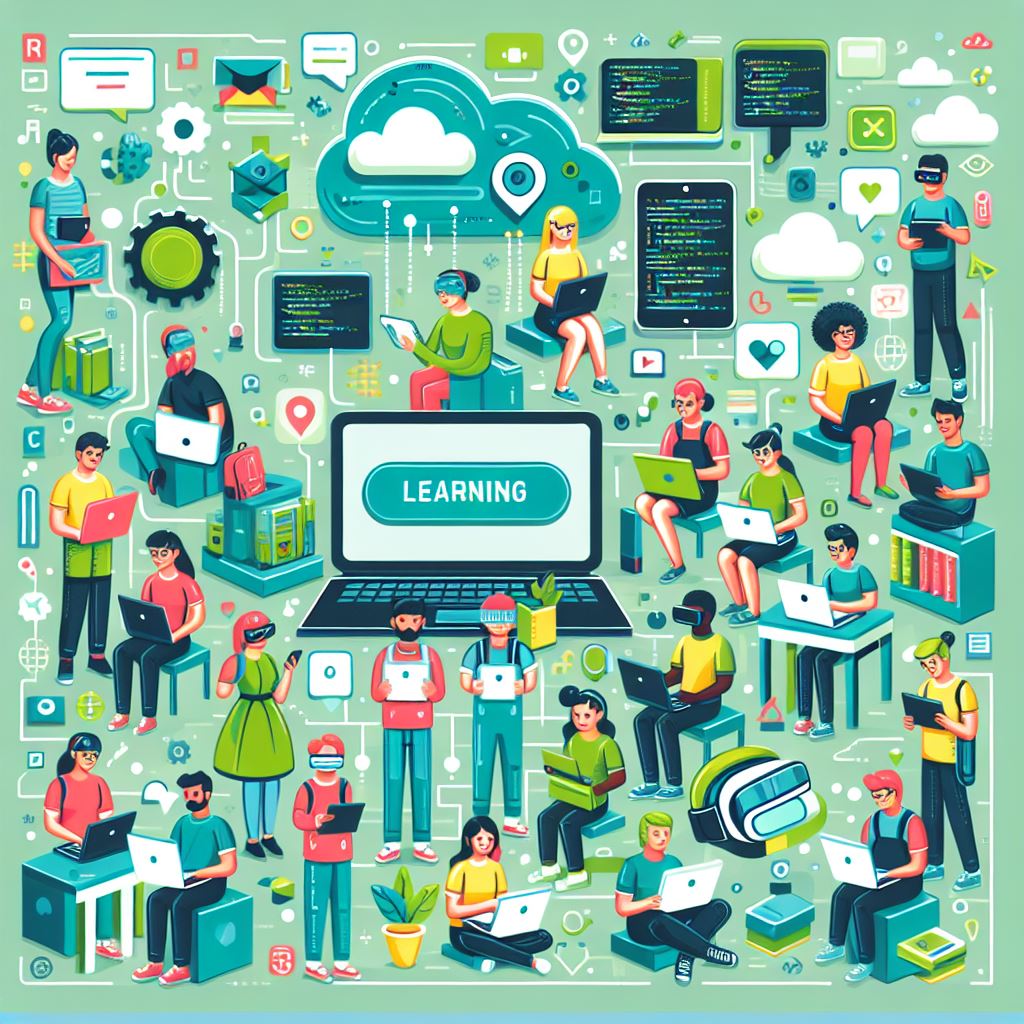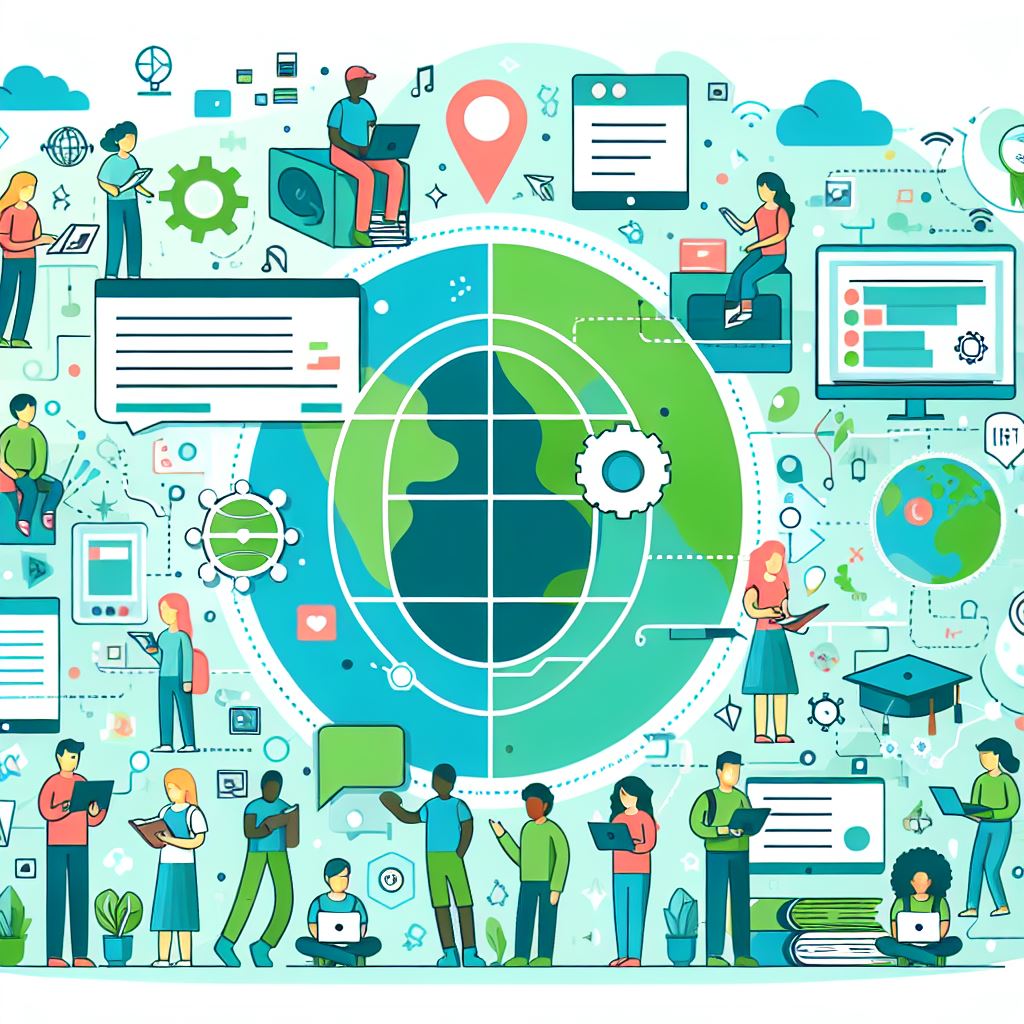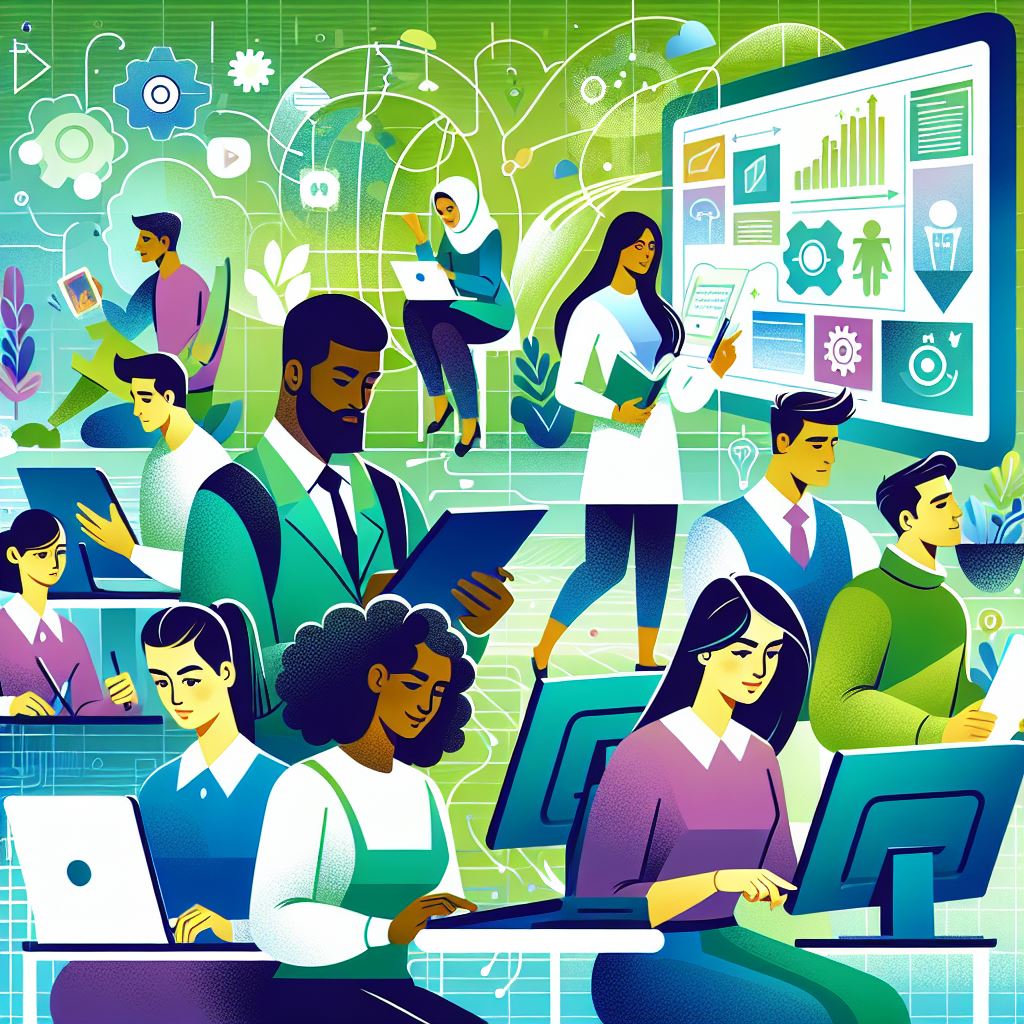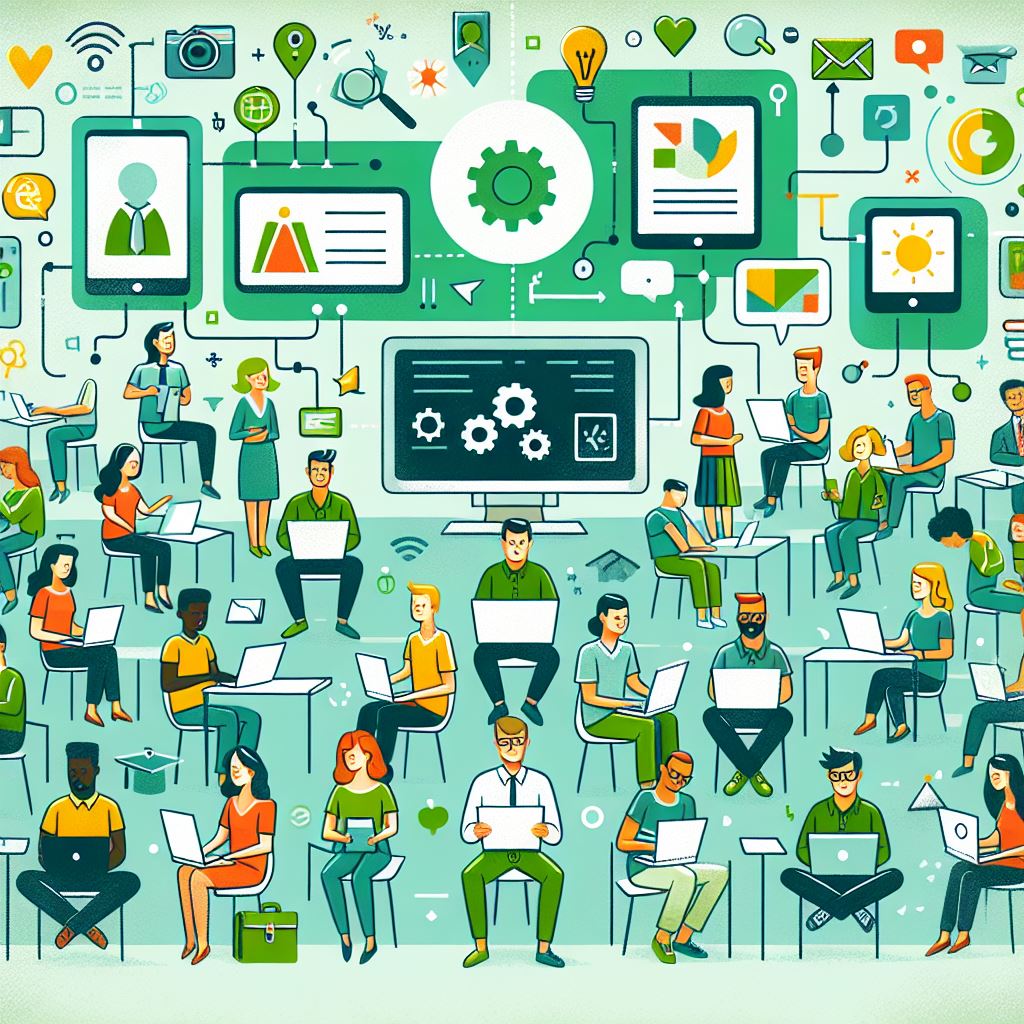In a rapidly evolving world, there is an element of inevitability concerning change. The introduction of AI into everyday working practice has resulted in organisations being required to adapt at an unprecedented rate. This adaptation is often concurrent with transformation which can present significant challenges both for organisations and the individuals withing them. However, nurturing a learning culture can significantly support this change and transformation process.
The Role of a Learning Culture
A learning culture encourages continuous learning and knowledge sharing. It values curiosity, exploration and growth; fostering an environment where employees are encouraged to learn from their experiences and apply their knowledge.
In the context of organisational change and transformation, a learning culture plays a crucial role:
- Adaptability: A learning culture promotes adaptability. Employees who are encouraged to learn are more likely to embrace modern technologies and processes, making the transition smoother.
- Resilience: Change can be difficult and stressful. A learning culture helps build resilience, as employees are better equipped to handle challenges and setbacks.
- Innovation: A learning culture fosters innovation. By encouraging curiosity and exploration, organisations can generate innovative ideas and solutions, driving the transformation process forward.


Understanding Growth Mindset
A growth mindset is a concept developed by psychologist Carol Dweck which refers to the belief that one’s abilities and intelligence can be developed through dedication, hard work and a love of learning.
When adopting a growth mindset, challenges are seen as opportunities to learn, and effort is seen as a necessary tool to be utilised to becoming an expert. Despite having been historically viewed as uncomfortable for both organisations and individuals, mistakes are viewed as learning experiences, not failures and feedback is welcomed and then used as a tool for improvement, rather than being seen as criticism.
Importance of Growth Mindset in a Learning Culture
A growth mindset is crucial in a learning culture for several reasons:
- Fosters Resilience: A growth mindset encourages resilience in the face of setbacks. When organisations and individuals believe they can improve, they are more likely to persevere when presented with the almost inevitable challenges posed by change
- Promotes Continuous Learning: It encourages individuals to develop and embrace a love for learning. Individuals and organisations who have developed a growth mindset will, in time, begin to understand that intelligence can be developed organically.
- Encourages Innovation: A growth mindset can enable a culture of innovation. When failure is seen as a learning opportunity, a growth mindset encourages risk-taking and exploration, both of which being fundamental contributors to innovation within an organisation.
- Enhances Collaboration: A growth mindset can enhance collaboration and teamwork. Individuals and organisations who have developed a growth mindset value learning from others and are far more likely to create cooperative relationships and engage with collaborative working.
- Improves Performance: Decades of research has demonstrated that organisations with promote and demonstrate a growth mindset see higher levels of performance and engagement.
A growth mindset is a powerful tool for fostering a robust learning culture. It encourages continuous learning, resilience, collaboration, and innovation, all of which are key to personal and organisational success. By embracing a growth mindset, we can unlock our potential and pave the way for a culture of learning and growth.
Learning Styles and Resources
There are many methodologies and frameworks in relation to how we learn, here are four of the most well-known:
1. VARK Model
The VARK model identifies four primary types of learners: Visual, Auditory, Reading/Writing, and Kinaesthetic. Each learning type responds best to a different method of teaching:
- Visual learners prefer to see information and visualise the relationships between ideas.
- Auditory learners best understand new content through listening and speaking in situations such as lectures and group discussions.
- Reading/Writing learners prefer to interact with text by reading and writing, and they understand and remember things best through written language.
- Kinaesthetic learners learn best through a hands-on approach, actively exploring the physical world around them.
2. Howard Gardner’s Theory of Multiple Intelligences
Gardner proposes that there are eight different intelligences that account for a broader range of human potential in children and adults. These intelligences are:
- Linguistic intelligence (“word smart”)
- Logical-mathematical intelligence (“number/reasoning smart”)
- Spatial intelligence (“picture smart”)
- Bodily-Kinaesthetic intelligence (“body smart”)
- Musical intelligence (“music smart”)
- Interpersonal intelligence (“people smart”)
- Intrapersonal intelligence (“self-smart”)
- Naturalist intelligence (“nature smart”)
3. Kolb’s Experiential Learning Theory
David Kolb proposed a four-stage learning process with two dimensions each:
- The Concrete Experience vs Abstract Conceptualisation dimension represents a continuum of how we approach a task or problem.
- The Active Experimentation vs Reflective Observation dimension represents a continuum of our emotional response, or how we feel about it.
The combination of these two dimensions results in four types of learners: Converging, Diverging, Assimilating, and Accommodating.
4. Honey and Mumford’s Learning Styles
Peter Honey and Alan Mumford adapted Kolb’s model and identified four types of learners: Activists, Reflectors, Theorists, and Pragmatists.
- Activists learn by doing. They need to get their hands dirty, to dive in with both feet first.
- Reflectors learn by observing and thinking about what happened.
- Theorists need models, concepts and facts to engage in the learning process.
- Pragmatists need to be able to see how to put the learning into practice in the real world.
It is important to note that everyone is different and may not fit perfectly into one style. It is also possible for a person to fall into more than one category. Understanding these styles can enhance the effectiveness of both teaching and learning.
Recognising different learning styles
Recognising that individuals have different learning styles is crucial in fostering a learning culture. Some people may prefer visual aids, while others might learn better through auditory or kinaesthetic means. Therefore, providing a range of learning resources and approaches is essential. Here are some suggestions:
- Online Courses: These can cater to various learning styles, as they often include videos, readings, and interactive quizzes.
- Workshops and Seminars: These provide hands-on experience and direct interaction, which can be beneficial for kinaesthetic and interpersonal learners.
- Mentorship Programs: These allow for personalised learning experiences and cater to individual learning styles.
- Communities and Discussion Forums: These can facilitate knowledge sharing and collaborative learning.


- Change Agent sessions: A Change Agent understands their service, technology and key considerations for change – they can localise the training for their colleagues, and we have seen sessions with Change Agents be particularly impactful. You can learn more about the value of Change Agents with this short Microsoft Learn module (written by and featuring our CEO). As part of the WeChange.AI service, we help our customers identify Change Agents as part of our unique framework for change.
- Make learning part of you rhythm of business: as part of your regular team meetings, set aside time to learn from one another – whether it be set learning from the organisation as a whole, or ideally a localised version presented by your teams change agent or manager, this should be time set-in-stone, as you’ll benefit from the approach to continuous service improvement.
Conclusion of the importance of learning cultures
In conclusion, a learninRecognising different learning styles
Recognising that individuals have different learning styles is crucial in fostering a learning culture. Some people may prefer visual aids, while others might learn better through auditory or kinaesthetic means. Therefore, providing a range of learning resources and approaches is essential. Here are some suggestions:
- Online Courses: These can cater to various learning styles, as they often include videos, readings, and interactive quizzes.
- Workshops and Seminars: These provide hands-on experience and direct interaction, which can be beneficial for kinaesthetic and interpersonal learners.
- Mentorship Programs: These allow for personalised learning experiences and cater to individual learning styles.
- Communities and Discussion Forums: These can facilitate knowledge sharing and collaborative learning.
- Change Agent sessions: A Change Agent understands their service, technology and key considerations for change – they can localise the training for their colleagues, and we have seen sessions with Change Agents be particularly impactful.
Make learning part of you rhythm of business: as part of your regular team meetings, set aside time to learn from one another – whether it be set learning from the organisation as a whole, or ideally a localised version presented by your teams change agent or manager, this should be time set-in-stone, as you’ll benefit from the approach to continuous service improvement. g culture is a powerful tool in supporting organisational change and transformation. It promotes adaptability, resilience, and innovation, and you should cater to various learning styles to enhance the effectiveness of your learning culture.
By investing in a learning culture, organisations can navigate the challenges of transformation, to emerge stronger and more adaptable in the age of AI.